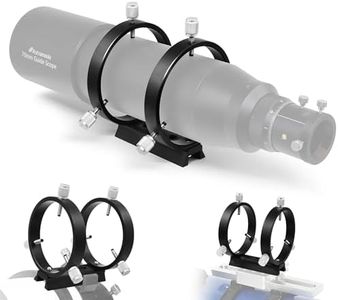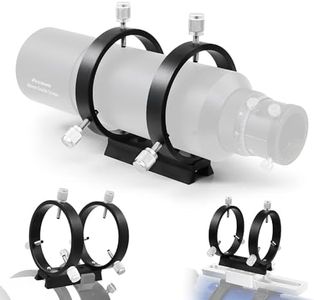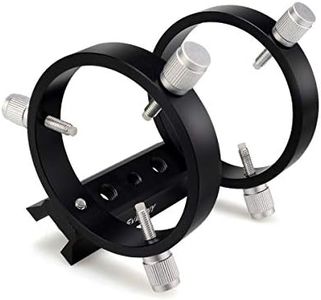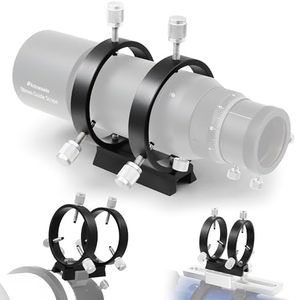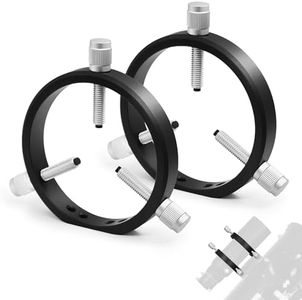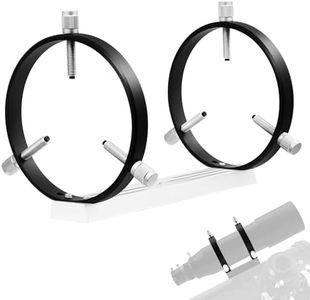We Use CookiesWe use cookies to enhance the security, performance,
functionality and for analytical and promotional activities. By continuing to browse this site you
are agreeing to our privacy policy
10 Best Scope Rings
From leading brands and best sellers available on the web.Buying Guide for the Best Scope Rings
Choosing the right scope rings is essential for ensuring that your rifle scope sits securely and allows for accurate shooting. Scope rings hold the optic onto your firearm, and selecting the wrong type or size can lead to misalignment, instability, or even damage to your scope. Consider the type of firearm, the scope’s tube diameter, and how you plan to use the setup—like hunting, target shooting, or tactical applications. The proper scope rings maximize comfort and shooting efficiency while minimizing the risk of accuracy issues.Ring HeightRing height refers to the distance from the base of the ring to the centerline of the scope tube. This is important because it determines how high your scope will sit above the rifle’s barrel. Low rings keep the scope close to the barrel, which is ideal for bolt-action rifles and helps with proper cheek weld, but may not fit scopes with large objective lenses. Medium rings offer a balance, while high rings accommodate larger scopes or rifles with raised bolt handles. To choose the right height, consider both your rifle’s receiver and the diameter of your scope's objective lens. Aim for the lowest height that still allows scope clearance over the barrel and good alignment with your shooting position.
Tube DiameterScope rings are designed to fit around the tube of your optic, which commonly comes in sizes such as 1 inch, 30mm, or 34mm. This is crucial because using mismatched rings and scope tubes can result in a poor fit or even damage. Always match the ring size exactly to your scope’s tube diameter. Check your scope specifications before purchasing rings and do not rely on visual estimates.
Mounting Base StyleScope rings need to be compatible with the mounting system on your rifle, such as Weaver, Picatinny, or proprietary systems. Each style has a different slot pattern and width, so it’s essential that the rings match your rifle's base. Weaver and Picatinny are the most common, but even these have slight differences. Before buying, confirm what type your rifle has and pick rings to match, ensuring a secure and reliable fit.
Material and ConstructionScope rings are typically made from steel or aluminum. Steel rings are heavier but offer maximum durability and strength, making them suitable for heavy recoiling firearms or rough use. Aluminum is lighter and often chosen for lighter rifles or when every ounce counts. Consider your firearm’s purpose: lightweight rings for portability and steel for ruggedness.
Attachment MethodDifferent rings use various attachment mechanisms to clamp onto the rifle base, such as simple screws, levers, or quick-detach systems. Screw-down rings provide a strong, lasting hold but require tools for removal. Quick-detach models allow fast scope changes without tools, which is useful if you swap optics often. Choose based on whether you need to remove your scope frequently or prefer a permanent setup.
Alignment and LappingProper alignment of the scope rings prevents stress and distortion of your scope tube, which is important for maintaining accuracy and scope durability. Some higher-end or precision rings are made with tight tolerances, while budget rings may require lapping (smoothing of the inner ring surface) for true alignment. If you pursue maximum accuracy or use expensive optics, look for rings known for excellent alignment or consider lapping them as part of setup.
